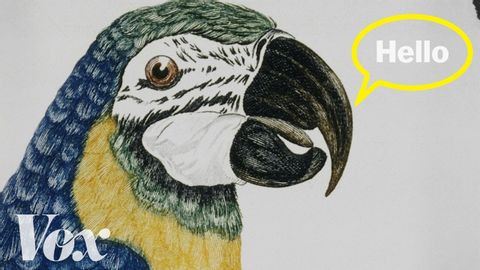【英語で雑学】オウムはなぜ人間のように喋ることができるの?
April Lu が 2022 年 02 月 23 日 に投稿  この条件に一致する単語はありません
この条件に一致する単語はありませんUS /ˈstrʌɡəl/
・
UK /'strʌɡl/
- v.t./i.奮闘する;もみ合う
- n. (c./u.)奮闘;苦闘
US /ɪnˈkrɛdəbəl/
・
UK /ɪnˈkredəbl/
- adj.信じられない;すばらしい;信じられない;信じられない
US /ˈkɑnˌtɛnt/
・
UK /'kɒntent/
- adj.満足している;満足した
- n. (c./u.)内容;主題;コンテンツ;満足;コンテンツ;含有量
- v.t.満足させる
- v.i.同意する
US /ˈɪmɪˌtet/
・
UK /ˈɪmɪteɪt/
エネルギーを使用
すべての単語を解除
発音・解説・フィルター機能を解除
